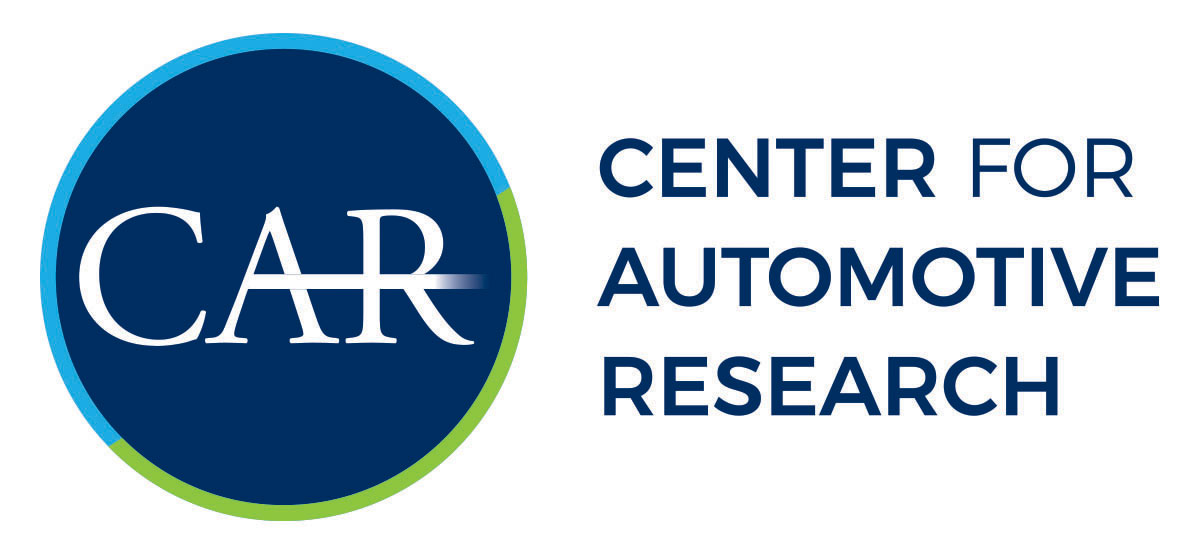EV Manufacturers: Electrify Your Path with Expert Insights and Networking
Are you one of the EV Manufacturers navigating the future of mobility? The Center for Automotive Research (CAR) is your compass, providing unbiased, actionable insights and essential connections to propel your success.
Unlocking the EV landscape:
- Subject Matter Experts (SMEs) at your fingertips: Get direct access to leading automotive researchers for peer review, strategy insights, research questions, and reference support.
- Network and learn with affiliates: Join exclusive roundtables and industry briefings on critical topics like cybersecurity, design optimization, CAV regulations, AI, and more. Build lasting connections with fellow EV pioneers.
- Deepen your knowledge and reach: Enjoy discounted rates to CAR events including Management Briefing Seminars and CAR Affiliates Webinars. Showcase your expertise by leading a CAR Webinar to reach an engaged audience of 200+.
- Shape the industry: Contribute to fundamental research projects and provide valuable feedback on key issues. Your voice matters to the future of EVs.
- Stay ahead of the curve: Access exclusive content like industry forecasts, the CAR Book of Deals, and our sustainability database.
- Build trust and credibility: Leverage CAR’s independent, unbiased research to support your strategic decisions and respond to industry matters with confidence.
Become a CAR Affiliate Member to:
- Fuel your innovation: Gain the insights and connections you need to stay ahead of the EV curve.
- Amplify your voice: Influence industry research and shape the future of mobility.
- Expand your reach: Build powerful partnerships and gain wider market recognition.
- Invest in your future: Secure a competitive edge in the rapidly evolving EV landscape.

Join the leading minds in EVs. Become a CAR Affiliate today.
Complete the form below to learn more about our Membership benefits and start your journey towards a brighter, electrified future.
Contact Steve Polakowski, Vice President for Business Development, today with any questions.
Example Research:
White Paper: Electric Vehicle Battery and Circular Economy Observations
Recycling, Jobs, R&D & Scope 3 Carbon Emissions
The concept of a circular economy for Lithium-Ion batteries (LiBs), along with its drivers, barriers and enablers has been studied recently (NREL 2021) with a view to inform public policy at the federal, state, and local levels and associated government initiatives and related goal setting. More recently, estimates on the monetary value generated per ton of battery recycling material have begun to appear [McKinsey 2023], as private investors and public sector agencies look for strategic and operational guidance. At Center for Automotive Research (CAR) we have observed an accelerated investment in electric-vehicle (EV) assembly plants, EV LiB manufacturing and related research & development (R&D) in the North America – primarily in the United States (U.S.), followed by Canada and Mexico.
With the intention of looking ahead and informing automotive policy makers, investors, manufacturers and suppliers, and communities, including the state and local economic developers, CAR has summarized our initial observations in this whitepaper.
Research Paper: Analog AM Band Interference in Electric Vehicles
There is an effort in the US Congress to require automakers to maintain AM radio in all vehicles, including new electric vehicles (EVs). However, the nature of EVs and their operating conditions, including acceleration and deceleration, pose a challenge to ensuring electromagnetic compatibility (EMC) with the analog AM band radio. This study, conducted by the Center for Automotive Research (CAR), shows that mitigating electromagnetic interference (EMI) in an EV is challenging and could lead to added costs for vehicle manufacturers. The cost of mitigation depends upon the electrical architecture of the vehicle and entails several design and engineering tradeoffs. Automakers may mitigate some EMI through vehicle engineering choices, including shielding, filtering, active noise cancellation, and strategic placement of components. These mitigation techniques can improve analog AM band reception. However, a total vehicle system EMC requirement would need to be included from the beginning of any future EV redesign, if not already considered by the automakers, to eliminate the need for piecemeal late-stage mitigations. These costs can be avoided by deleting analog AM radio from vehicles and providing consumers with alternative products for in-vehicle audio content.
Research Paper: Escalating Need for Auto Supply Chain Action to Align with Paris and Limit Warming to 1.5*C
While sustainability in the automotive industry is not new, it is becoming an increasingly vital part of doing business for many. In recent years, the industry has been coping with supply chain disruptions resulting from the pandemic and ongoing parts and semiconductor shortages. However, amid these enduring challenges, sustainability has become top of mind for many automakers and suppliers. Internal and external pressures are propelling the industry toward incorporating more sustainable practices throughout the supply chain.
As a result, environmental, social, and governance (ESG) initiatives, such as the demand to reduce greenhouse gas (GHG) emissions to meet the Paris Agreement target of limiting global warming to 1.5°C, have become increasingly commonplace across all aspects of automotive operations. Agencies such as the International Energy Agency (IEA) and the Intergovernmental Panel on Climate Change (IPCC) seek to further guide industry reduction of CO2 emissions, reaching net-zero emissions globally by 2050. As a result, many vehicle manufacturers have carbon neutrality targets in place, commonly announced through public annual sustainability reports, showcasing their sustainability efforts and goals. Topics included in these reports range from renewable energy to human rights efforts. These announcements are critical
in signaling to investors and stakeholders public-facing organizational sustainability initiatives. Still, some companies are limited in providing actionable and measurable data and often lack consistency in reporting from one manufacturer to the next. Despite the challenges from this significant shift in the automotive industry, there are also opportunities to further align across stakeholders, make additional commitments to broader climate initiatives, and advocate for more comprehensive regulations. A coordinated effort is an important step in achieving sustainability goals now that the industry has recognized accelerated action is required to limit global automotive operations’ environmental and social impact.
